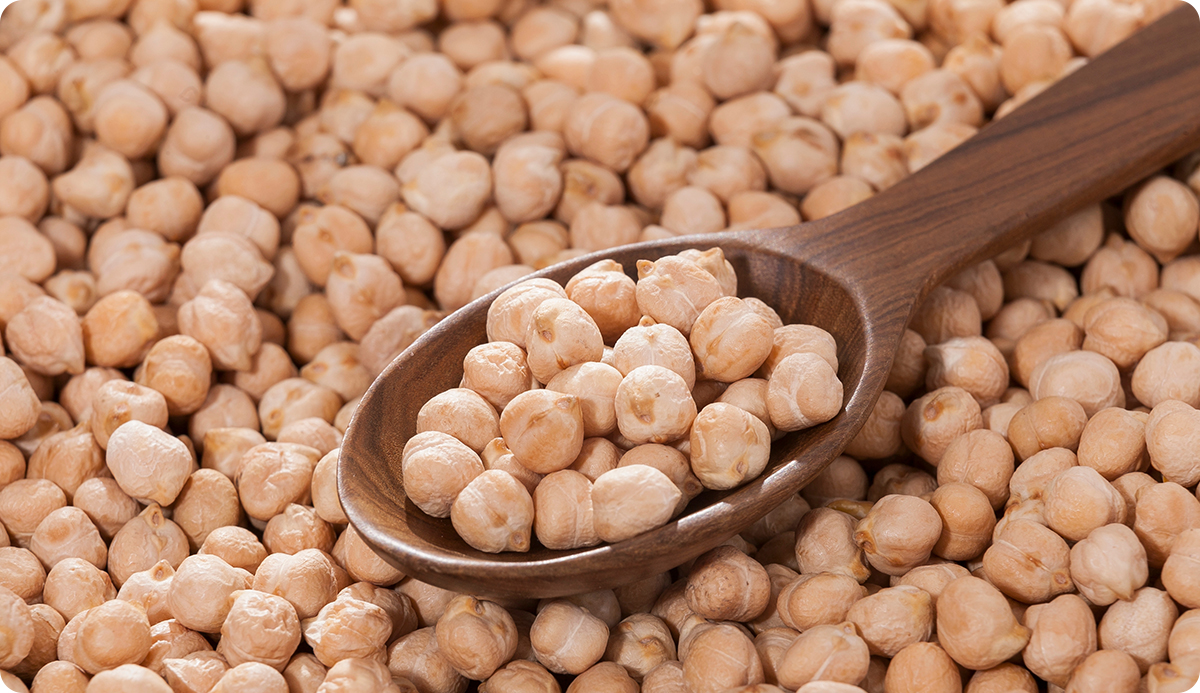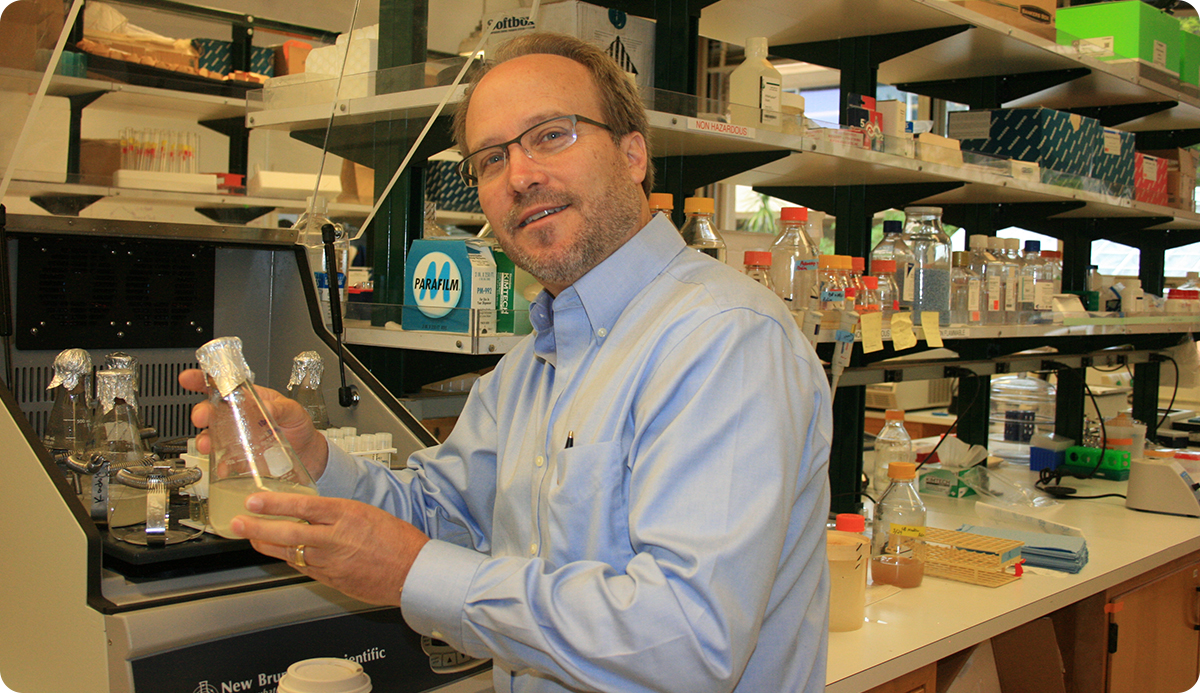November 26, 2025
University of California-Davis scientist and co-founder of chickpea-focused biotech company NuCicer, Doug Cook, works on developing genetic and genomic resources that target real world problems. His advances in wild chickpea diversity, climate-resilient breeding, and improved nitrogen fixation can support micronutrient security, address hidden hunger — and reshape margins, risk management, and long-term value, positioning chickpea for an expansion across the globe.


Kabuli chickpeas—now the focus of wild-gene introgression—are the target of Doug Cook’s work on higher protein, improved resilience, and traits that strengthen value from farm to processing.
The project started with a few scientific questions. How does the diversity of wild Cicer species differ from the diversity of cultivated Cicer species (C. arietinum = chickpea)? Once we established how and how much the wild species differed from cultivated, then the question turned to why — Does wild diversity allow adaptation to natural habitats? Are there aspects of wild diversity that might be useful in agriculture?
Specific wild traits became priorities as we studied the wild collections. Eventually we focused on a few. In my academic lab we investigate nitrogen fixation, disease resistance, and the ability to grow in acidic soils. At NuCicer we focus on protein.
The notion of establishing a business came from my daughter, Kathryn Cook, who is the CEO of NuCicer. Kathryn knew of the high protein content in my lab’s genetic materials and she thought we should start a company around those observations. Kathryn has a background in technology and business. She also has great interpersonal skills and is a very good strategic thinker. She was well suited to the task of starting NuCicer.
Bridging the gap from discoveries in the lab to applications in industry required several components: determining that particular wild traits (e.g., high protein) could be transferred to cultivated varieties (they can!), setting up an effective R&D pipeline, understanding the business space (production, markets, customers, etc) and implementing the various facets of launching and running a company.

Built for the field, not the lab. Improving chickpeas through wild genes supports both agricultural sustainability and nutrition outcomes — a double win.
My initial interest was nitrogen fixation in legumes, which I have studied in an academic context for over 30 years. For most of the first two decades of my career, I focused on questions about fundamental science. I became interested in chickpea and other pulse crops around 2006, when I traveled to India. At that time I decided to turn my focus to the study of legume crops, especially to the task of developing genetic and genomic resources to tackle real world problems.
By 2012 we had made good progress on developing genomic resources for chickpea. Moreover, chickpea looked like a great system to ask fundamental questions about legume domestication, which was an interest of mine. Today I continue to be motivated by work on nitrogen fixation, but this has expanded to issues of disease resistance and resistance to abiotic soil stress.
More protein in the seed means fewer money to produce more protein. Higher protein simplifies ingredient lists. It also opens new avenues for processing. Etc. Chickpea is well-suited for plant-based products. High consumer acceptance. Mild flavor. Pleasant aroma. There are traits at the farm level. Traits at the levels of seed processing and ingredient production. Traits of interest to consumers. Many of these traits are well known, but need improvement.
In terms of climate resilience, drought and heat are high on the list. We can push chickpea to perform better under low water availability and under high temperatures, but there are limits. Nevertheless, I think we can anticipate new varieties that have greater resiliency as temperatures and water availability vary. We can also anticipate greater resistance to diseases that are driven by climate, such as Ascochyta blight. But to meet the challenges of climate, we should anticipate a combination of genetics and agronomic practices, which is an old story that is still true.
There is certainly room to improve microbial inoculants for nitrogen fixation, but it's not just a matter of better microbes. Developing cultivated plant varieties that respond better to microbes is also important. Chickpeas that fix significantly more nitrogen will have greater value as rotation crops — this is a very realistic, if complicated, goal.
Soil borne diseases will continue to require the use of appropriate agronomic practices, including site selection, chemistry and rotation management. But the greatest impact will be genetic resistance, which will require investments in research beyond those that are currently being made.

“Chickpeas that fix significantly more nitrogen will have greater value as rotation crops — this is a very realistic, if complicated, goal.”
In order for research to impact market needs, one needs specific research targets. Those targets need to be realistic from a research perspective (we can’t solve all problems with research), resources need to be appropriate to the task, and the business case needs to justify the investment. One needs to prioritize effort. Dialogue is a good starting point.
In the decadal time frame, I think we will see the establishment of new chickpea varieties with increased value due to novel genetic innovation. High protein is one example, but there are others. Success will require capturing value across the value chain (R&D, growers, processors, customers). I see this as an incremental process; first, small and stable inroads, followed by a future where chickpea is one of the major global commodities.
Traditionally ICLGG has fostered communication within the scientific community. But this is changing. ICLGG 2026 will involve the “Legume Industry Value Chain Workshop” where representatives of the pulse industry communicate needs to researchers. Moreover, throughout the workshop there will be scientific sessions focused on breeding technologies, trait targets, applications to crop improvement, etc., which sit in the continuum between research and real-world application.
In my academic work, I am most excited about the possibility of developing legumes that contribute, in a more substantial way than now, to agricultural sustainability. Nitrogen. Water. Soil health. Productivity on marginal lands. Currently these are aspirational goals, typically not translated with high impact to the farm. I know this can change, but we need appropriate focus.
We need outcome-based management of priorities. And we need sustained and patient investment. It’s not just about research. It’s also about grower and industry priorities, as well as government policies.
Disclaimer: The opinions or views expressed in this publication are those of the authors or quoted persons. They do not purport to reflect the opinions or views of the Global Pulse Confederation or its members.